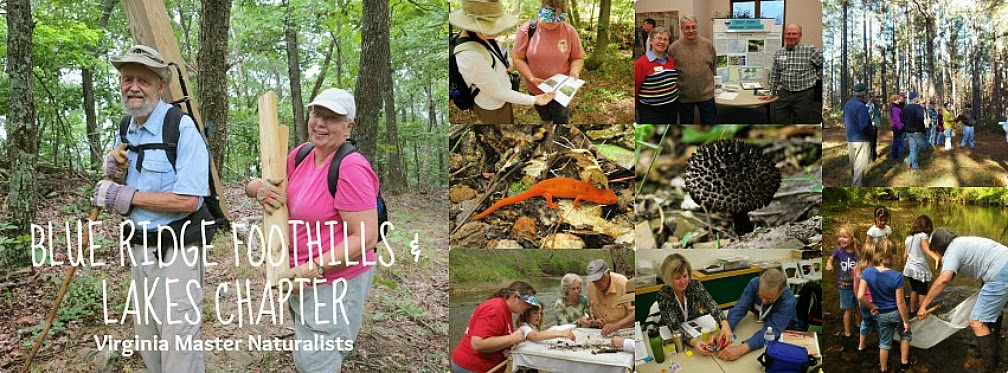Fall is a great time to take to the woods and find a variety of mushrooms here in the forests of Virginia. Forgetting my camera but having my ipad I captured these wild mushrooms in Callaway Virginia.
I was excited to find the Old Man of the Woods (that is the black and white mushroom top left.) Old Man of the Woods is edible, and best when fresh and not old and wrinkly like the name implies! I never eat them, even though I have learned quite a bit about edible vs non at a Virginia Master Naturalist Advanced Training.
Here is an interesting article about Foraging for Edible Mushrooms in Richmond, Virginia you may enjoy.
There are a few field guides I recommend for mushroom i.d., my favorite is the National Audubon Society "Field Guide to Mushrooms" of North America. If you don't plan on carrying one with you, then take photos and notes and check online later. I would plan on handling them for the best i.d.
For example, is the stem solid or hollow? Does the cap have gills or is it like the photo top center that is sponge-like? Many mushrooms are easily identifiable, but then there are some that emulate the edibles and are actually toxic.
We don't recommend you pick and eat any wild mushrooms unless you have an expert Mycologist on hand. But as the experts will tell you "Go ahead you try one 'first' and I will try it after you." In other words, don't eat wild mushrooms.
Some highly prized morel mushrooms have look-a-likes, here is an article about Morel Hunting: A Beginner's Guide to Hunting Morel Mushrooms. The beauty of morels is they grow back in the same place each year, so try to GPS the exact location if you are out and about and stumble across them in the early Spring.
Old Man of the Woods
Description:
Ecology: Mycorrhizal with hardwoods, especially oaks; common; summer and fall; primarily distributed in eastern North America but also recorded from the Southwest.
Cap: 3-15 cm; convex becoming broadly convex in age; dry; covered with large, black, soft, woolly scales over a whitish to grayish base color; the margin frequently with hanging remnants of a whitish to grayish partial veil.
Pore Surface: Whitish, becoming gray to black; bruising red, then black; pores angular, 1-3 per mm; tubes to 2 cm deep.
Stem: 4-12 cm long; 1-2.5 cm thick; more or less equal; grayish to blackish; shaggy; sometimes reticulate near the apex; often with an ephemeral ring or ring zone; solid.
Flesh: Whitish throughout, turning pinkish to red when exposed, then blackening over the course of an hour.
Odor and Taste: Not distinctive (some day older ones taste like mothballs). This fellow says they make an awesome rice pilaf!
Different online sources had different things to say, this one in particular I found humorous:
"Status: Edible, when young and fresh. As it ages, the “old man” becomes crusty, wimpy, and tasteless."
and this one:
"You might think that the old man is one of the homeliest mushrooms you've ever laid your eyes on, with the shaggy, grizzled, and timeworn appearance. But after a season or two, after meeting the species often in the woods, you'll tend to soften your judgment. It then becomes just another old friend." Bill Russell from here.
If you want to learn more about fungi, click here for the MSA (Mycological Society of America).
By Shellie L.


No comments:
Post a Comment
Thanks for your comment and interest! NOW GO OUTSIDE!